Dr. Kildare's Crisis

Brief Synopsis
Cast & Crew
Harold S. Bucquet
Lew Ayres
Lionel Barrymore
Laraine Day
Robert Young
Nat Pendleton
Film Details
Technical Specs

Synopsis
As young doctor James Kildare and his finaceé, nurse Mary Lamont, make plans for their wedding day, Mary's brother Douglas arrives for a visit. Douglas meets with Dr. Kildare and asks him to arrange a meeting with wealthy Mr. Chanler, whose daughter Dr. Kildare saved some time ago, in order to solicit funding for subsidized trade schools. Soon after, the happy couple's optimism evaporates into despair when Douglas begins to hear nonexistent sounds and experience extreme mood swings, symptoms that lead Dr. Kildare to suspect that Douglas may have epilepsy, a hereditary condition that threatens his marriage to Mary. Dr. Kildare succeeds in getting Douglas an appointment with Chanler, but while Douglas meets with the philanthropist, Mary tells Dr. Kildare that her brother was kept awake all night by the sounds of a screaming woman, which confirms his suspicions about Douglas' epileptic symptoms and promts him to call Chanler and have him send Douglas to his office right away. The results of an experiment, in which Dr. Kildare administers coffee, whiskey, meat and salt to Douglas and lies to him in order to shock his nervous system, suggest that Dr. Kildare's assumption is correct. Dr. Kildare sadly admits that Douglas' prognosis is at best a lifetime of mediocrity and a complete mental breakdown at worst. As a result, Mary and Douglas plan to run away, but their flight is interrupted by the intervention of Dr. Gillespie, whose shrewd questioning of Douglas elicits the fact that he has suffered a recent head injury that might be responsible for the symptoms. When a further examination reveals a head trauma that can be remedied by a simple operation, the future again looks bright for Mary and her young doctor.

Director

Harold S. Bucquet
Cast

Lew Ayres
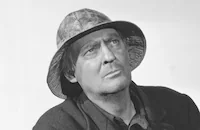
Lionel Barrymore

Laraine Day

Robert Young
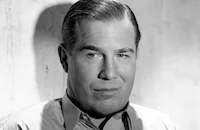
Nat Pendleton

Walter Kingsford
Alma Kruger

Bobs Watson
Nell Craig
George Reed
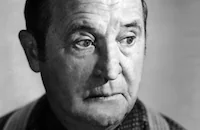
Frank Orth
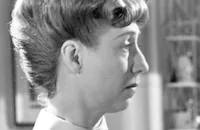
Marie Blake
Horace Macmahon
Emma Dunn

Ann Morriss
Frank Sully
Lillian Rich
Gladys Blake

Pierre Watkin
David Newell
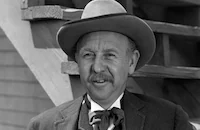
Charlie Arnt
Catherine Lewis
Mimi Doyle
Syd Saylor
Milton Kibbee
Fred Santley

Byron Foulger
Gus Schilling
Tom Collins
Bryant Washburn Jr.
William Haade
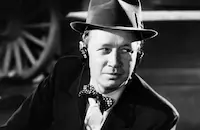
Eddie Acuff
Ernie Alexander
Crew
Max Brand
Daniel B. Cathcart
Paul Dresser
Cedric Gibbons
Willis Goldbeck
Willis Goldbeck
Gene Ruggiero
Harry Ruskin
John Seitz
Douglas Shearer
Al Shenberg
David Snell
Edwin B. Willis

Photo Collections
Film Details
Technical Specs

Articles
Dr. Kildare's Crisis -
By Violet LeVoit

Dr. Kildare's Crisis -
Quotes
Trivia
Emma Dunn (Mrs. Martha Kildare) and Ann Morriss (Betty) are listed in records playing those roles, but are not seen in the final print.
The Medical Society of New York wrote a letter to the PCA protesting the way epilepsy was presented in the movie. They objected to the claims that epilepsy is inherited, that it is curable and that it leads to insanity.
Notes
The working title for this film was Should Dr. Kildare Tell? The picture was the seventh in the Dr. Kildare series. A New York Times news item notes that although director Harold S. Bucquet's first choice for the role of Dr. Gillespie was series regular Lionel Barrymore, because Barrymore was ill at the time, the studio refused to let him work.
The MPAA/PCA Collection at the AMPAS Library contains a letter from the A. W. Rudnick, Secretary of the National Creamery and Buttermaker's Association, to MPPDA President Will H. Hays, in which Rudnick complained that the film shows "people drinking milk and make[s] it appear that milk drinking is an object of ridicule." He went on to point out "I have failed to see a single movie where a young man or a young woman or an old man or an old woman has asked for milk when attending a cocktail party or gathering of any kind...The dairyman who sells fluid milk gets a higher income than any of the farmers and when the farmer has money he goes to the movies. He is a better customer of yours than the distillery employee or the coffee or tea dealer." Hays personally responded by assuring Rudnick that "there is no intention on the part of the organized industry to ridicule milk drinking." Furthermore, Hays informed Rudnick that he had noticed that in studio's dining rooms a large number of people were drinking milk daily. In 1941, the PCA received another letter of protest relating to the film, this time from the Medical Society of New York, which objected to the way in which epilepsy was presented in the film. The Society took issue with statements in the film claiming that "epilepsy is inherited, that epilepsy is curable, and that epilepsy progresses into insanity." For more information on the Dr. Kildare series, for Young Dr. Kildare.















